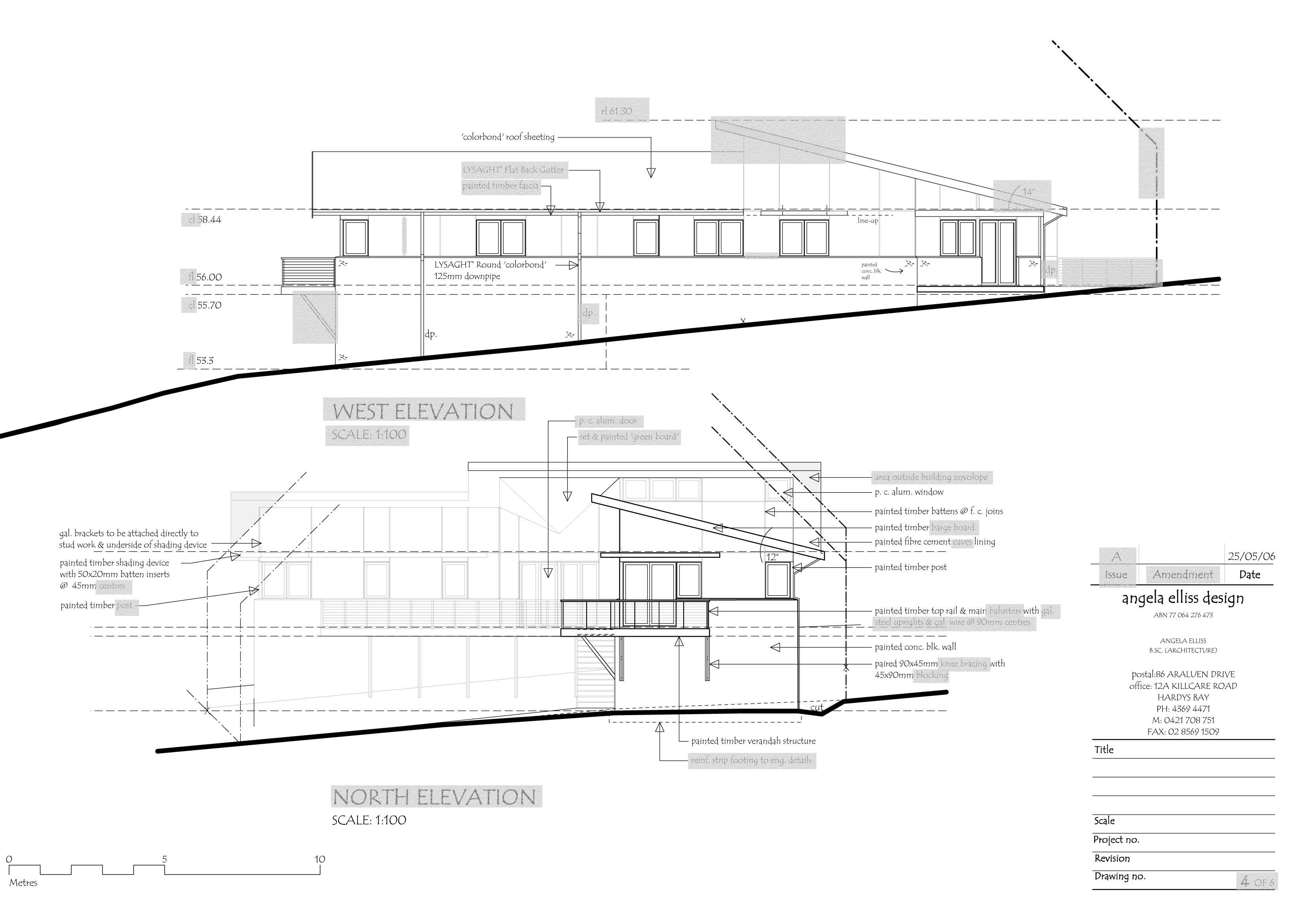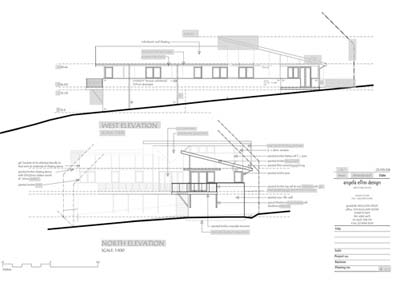• Move cursor over small elevation; large elevation will adjust.
• Click small elevation to freeze. Double-click to unfreeze.
• Drag the small or large elevation to a location of your choice.
• Large elevation is scrollable and has grey "hotspots".
• Move the cursor over the hotspots to see explanation.
• Click the hotspot to see full explanation, if there is one.
• Note: Full explanations will replace this text.
• Double-click large plan to super-size it.
Eaves Eaves are the external underside area between the gutter and the outside wall of your home. Eaves are usually clad with fibre cement sheeting joined together with plastic battens. But if you want a clean finish and something different you can use plaster set "green board" for a seamless external gyprock finish, or painted or lime washed timber v-joint flooring can be a very attractive alterative. Eaves can also be made from Soffit Fibre cement which is constructed from cement, silica, cellulose fibres and water.
';
Plan Issue "A" is the plan issue & states it is a first issue, "B" would be the second issue where plan changes have occurred.
Amendment Area The amendment area allows the designer to note down changes that have been made to the drawings eg. Extra floor space added to bed. 1
Balustrade Balustrade is the common word used for railing in the Australian building industry Council heavily regulates the height and construction standards of these to ensure public safety. You can contact your local council or a balustrade manufacture or carpenter for safe balustrade construction - as all these professionals use the Building Code of Australia (BCA) as a guide to ensure regulation safe balustrades
Building envelope The building envelope is an invisible boundary and its dimensions vary from council to council but generally it is located from the boundary line and rises up 4500mm vertically and then turns in towards your property 45°. If this is done on all boundary lines it leaves you with what is call the "building envelope" and your building should not protrude through this envelope. Search your local council website for more information on these DCP Registers
Roof Pitch This indicates the new developments proposed roof pitch. To work out the pitch of an existing roof see HDDs roof pitch calculator.
Protrusion of Building Envelope This shaded area indicates that this portion of the building is outside the building envelope. The building envelope is an invisible boundary line and its dimensions vary from council to council but generally it is located from the boundary line and rises up 4500mm vertically and then turns in towards your property 45°. If this is done on all boundary lines it leaves you with what is called the "building envelope" and your building should not protrude through this envelope. Search your local council website for more information on these DCP Registers
Sloped Brick Sill This indicates a sloped sill.
Ridge Level This is the Ridge Level and its level of 61.3 in relation to Australia Height Datum (AHD). But it can also mean a relative contour level depending on where on the plan it is used. Read more at this Australian government website
Gutter This is a gutter the shape of a quarter of a circle.
Fascia A fascia is timber trimmer or "colorbond" member that is located at the end of your buildings trusses or rafters - and behind the gutter. It can be constructed of anything you like as long as it is practical and meets bush fire requirements for your area.
Ceiling Level This is the ceiling level and relates to AHD. AHD level 0 relates to sea level and all AHD levels relate back to this eg AHD 1.00 means 1 Metre above sea level. Read more at http://www.ga.gov.au/geodesy/datums/ahd.jsp
Floor Level This is the floor level and relates to AHD. AHD level 0 relates to sea level and all AHD levels relate back to this eg AHD 1.00 means 1 Metre above sea level. Read more at http://www.ga.gov.au/geodesy/datums/ahd.jsp
Knee bracing Knee bracing is a type of structural support and can be used in place of a column if a column is impractical. They can be constructed of timber or steel and can be turned into a feature with a little design effort from a building designer or a creative engineer
Timber Batten This is a timber batten and in this case it is used to cover the joins between fibre cement sheeting - currently this is a very modern way to clad homes and very cost efficient
Centres Centres means measured from the centre of that particular product to the next of the same.
Post A post is either a timber or steel member that stands vertically from a base point to the under side of another structure - in comparison to a column that also starts at a base point but penetrates through another structure eg, a post - supporting a deck or a column that supports the deck and also passes through the deck to support a roof.
Powdercoated aluminium Powdercoated aluminium is the paint coating used on aluminium doors and windows. http://www.duluxpowders.com.au/powd/cda/powd_cda_home/1,1190,,00.html
Green board Green board is manufactured by Boral and is used in areas where moisture is a problem. Recently the products are being used by plasters in external uses. The new trend to finish large areas of fibre cement sheeting above verandahs is to use "green board" and have the joins set by a plasterer. Previously this material would have been fibre cement sheeting with plastic joiners and then painted - the plastic strip remaining very visible.
Barge Board A barge board is a piece of timber that covers the ends of rafters or trusses for aesthetic and waterproofing requirements.
Reinforced strip footings Reinforced strip footings to engineers details this means that you will need to engage an engineer to prepare drawings for this detail. Strip footings require reinforcement bars (reo) to give strength to the concrete to prevent cracking.
Balusters Balusters are the horizontal members between posts in a balustrade that provide extra support.
Galvanised Galvanised is the protective coating applied to steel to make it more durable. Steel has varying grades of finishes - Hot dipped zinc/aluminium coatings on steel are used for roofing and rainwater goods eg. "colorbond". Hot dipped zinc coated steel is called Galvanised steel - used in the fabrication of structural steel members such as beams and columns. Stainless steel is a generic term for a family of corrosion resistant alloy steels containing 10.5% and 28% chromium. It is the most durable of the steel products in the construction industry. Austenetic stainless steel is used for household items and contains a low chromium percentage (18% ). Duplexe stainless steel "marine grade" is used in ocean side locations containing a high chromium percentage (28%).
-->

